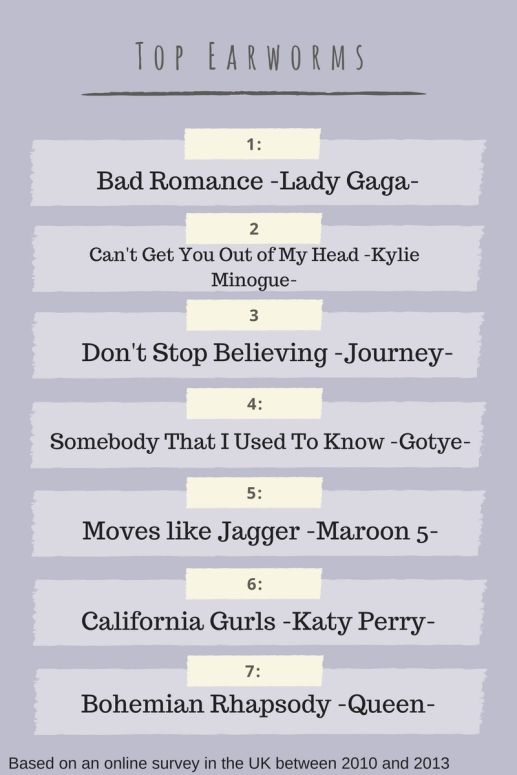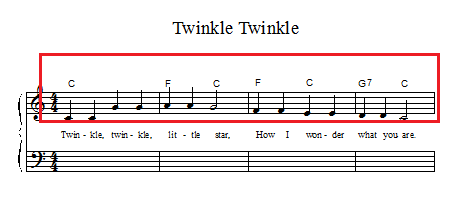From time to time, we all have that one song that we just can’t get rid of in our head. It constantly repeats itself endlessly in an incessant loop wherever we are, tormenting us day and night. Whether you just woke up from bed, queueing up for groceries, or doing our daily morning commute to work, we all can hear it being played.
It’s called an earworm, also known as a brainworm, sticky music or what I would personally like to call it, The Last Song Syndrome. In academic terms, it’s called Involuntary Music Imagery or INMI for short. An earworm is a catchy piece of music or melody that unconsciously repeats continuously inside a person’s brain long after the music or melody has stopped playing.

According to Dr. James Kellaris, a marketing professor at the University of Cincinnati College of Business Administration, he discovered that up to 99% of humans experience earworms at least once in our life. Earworms have been a subject of intense study among psychologists. They are interested in why some songs are ‘stickier’ than others. They are also very curious as to why earworms occur and what role our brains play in recalling short segments of music of melody playing in endless loops, like a broken tape recorder. They are also interested in what external factors trigger earworms. Does it happen when our mind becomes idle? Do we hear it when we recall a certain distant memory? What emotions do we feel when we have a song stuck in our head?
When this song became viral, it appears everywhere. They are notorious for triggering earworms, because 1) they repeat incessantly, and 2) their rhythms are addictive.
Dissecting an ‘Earworm’: Why do some songs always seem to get stuck in our head?
According to a study done by Kelly Jakubowski, Ph.D., of Durham University, songs that are ‘sticky’ have a few common traits. Firstly, ‘sticky’ songs follow a common contour pattern where the first phrase rises in pitch and the second falls. Take ‘Twinkle Twinkle Little Star’ as an example. It is a very popular nursery rhyme almost all children will recognize. It has that signature rise and fall of pitch in its melody.

Children’s music, in particular, takes advantage of this contour pattern. It is easy to follow, sounds pleasant and hence children have the tendency to either repeat playing the song or sing along with it. Sometimes, it can drive parents crazy as they will continually sing or play the song over and over again. This tendency to repeat hearing again, and again is another contributing factor in triggering earworms.

Secondly, ‘sticky’ songs are usually faster, contain generic and easy-to-remember melodies. They also contain notes with longer durations and small pitch intervals than non-sticky songs. These two features suggest that these songs are usually easy to sing along or hum to the melody. It is this ability to sing along that makes the song really sticky, resulting in more frequent and longer earworm.
Another music gone by viral by Ylvis. It has all the recipes for triggering earworms. Catchy tunes and easy to remember lyrics. Notice also that the notes attached to a particular syllable in the lyrics are longer apart making it easier to follow. But overall the song is fast paced.
Thirdly, the more often you hear the song playing, the more ‘sticky’ the song becomes. If you are constantly bombarded by the same song during the day, you are more likely to suffer from earworm to that song. The opening riff of ‘Moves like Jagger’ by Maroon 5 was reported to be one of the top named earworm tunes in an online survey conducted in the UK between 2010 and 2013. That’s because it was a popular song, hitting the top music charts worldwide. Song has hit the top of the charts generally gets more airplay on the radio and a bigger presence on streaming services like Spotify or Apple Music. The opening whistling melody at the beginning of the song follows the common contour of a rise and fall of the pitch in each note, and the pitch intervals between note relatively small, a recipe ripe to cause earworms.

Song hooks are short, easy-to-sing segments of a song that can also contribute strongly to how ‘sticky’ a song can be. It need not contain any meaningful lyrics. Take for instance the opening of Lady Gaga ‘Bad Romance’. It opens with an ‘Oh-oh-oh-oh-oh! Caught in a bad romance. Oh-oh-oh-oh-oh-oh!’. Anyone can follow that. The song continues with:Rah rah ah-ah-ah!
Rah rah ah-ah-ah!
Ro mah ro-mah-mah
Gaga oh-la-la!
Want your bad romance.
Why does our brain loops a melody unconsciously?
There is still a lot that we don’t know about earworms. Our brain processes auditory information in the auditory cortex, located in the temporal lobe, which is mainly affiliated with short term memory. An earworm may be relying on a type of memory system called the ‘phonological loop’. A ‘phonological loop’ is described as a ‘short loop of recording tape that continuously (and temporarily) stores a small amount of auditory information.’ Most auditory information that we continuously receive are processed into long term memory or quickly forgotten to make way for new auditory information. However, certain songs or parts of a song have a greater tendency to hang around in the short term memory for a longer period than usual. These songs have certain properties that excite the brain to store the auditory information far longer than usual, compelling the attention of the brain and forcing it to repeat the song in the ‘phonological loop’.
How do “Earworms” start?
A study conducted by Victoria J. Williamson and her team from the University of London, UK, looked at classifying everyday circumstances in which INMI are triggered. In other words, they wanted to examine the contextual circumstances associated with the everyday occurrence of INMI. Previous studies have already shown the frequency of INMI by age groups, how often it happens and even how long it persists. No one has actually studied when and where earworms are triggered, what people were doing when earworms were triggered, or their exact state of emotions when it happened.
They discovered that exposure to music, whether recent or through repetition is the most common way that earworms are triggered. This comes as no surprise as it has been shown statistically that top music hits frequently replayed on the airwaves have a greater tendency for trigger earworms. The next common trigger is memory triggers, whether by associating the song to a person, situation, sound or rhythm that they encounter in their daily lives. It can be a very memorable event in your life, like a breakup, a childhood memory, a hilarious and embarrassing moment, or encountering a person that looks or dresses like a popular music artist or celebrity. People who are stressed or suffering from some form of anxiety or psychological traum also reported to suffer from earworms. Exams, weddings, public speaking and sports competitions are some stressful events that we would most likely encounter at least once in our lives. Finally, earworms can also be triggered by periods of absent-mindedness, especially when day-dreaming or engaged in monotonous tasks, which makes sense as earworms are triggered unconsciously and without any control.
So don’t worry if you have a particular song stuck in your head for a very long time. It’s perfectly normal. Chances are, there are other people who are most likely suffering from it as well. There are some things you can do to get rid of it. For starters, switch to a different song, or if you are musically inclined, play a musical instrument to erase that sticky song from your head. You can also keep yourself intellectually busy like initiating a conversation, read a book or solving puzzles so that all the brain power is devoted to that intellectual task. If none of this works, then the best way is to just be patient. It will go away eventually.
I created a Spotify playlist, filled with songs past and present that would most likely cause earworms. Be warned! These songs can be very sticky!
References:
https://www.theguardian.com/music/2006/jun/22/popandrock
http://science.howstuffworks.com/life/inside-the-mind/human-brain/songs-stuck-in-head.htm
The context or situations in which earworms are triggered. http://journals.sagepub.com/doi/pdf/10.1177/0305735611418553
The properties of music that stick. http://www.apa.org/pubs/journals/releases/aca-aca0000090.pdf